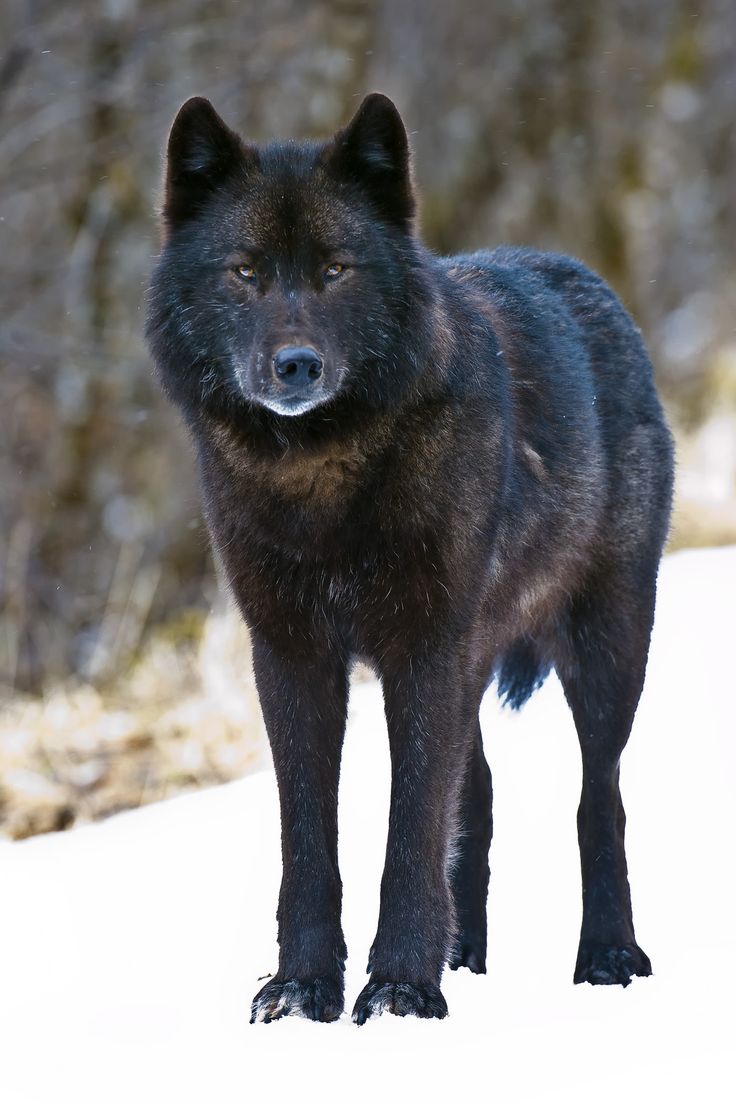
An undated photo of an Alexander Archipelago wolf in Southeast Alaska. (Courtesy photo by Robin Silver/Center for Biological Diversity)
An estimate of Prince of Wales Island’s wolf population is complete and in the hands of state and federal wildlife managers. But officials refused this week to share their numbers with a regional council tasked with advising subsistence hunting and trapping on federal land. This comes as a petition is pending to list Southeast’s wolves as a threatened species.
There will be an open season for wolves on Prince of Wales Island, state officials said.
That was the message delivered to the Southeast Alaska Subsistence Regional Advisory Council, which is tasked with making key decisions on hunting and trapping on federal land and has a record in supporting the state’s wolf management.
But hard limits on harvesting wolves were eliminated last year. And that allowed hunters and trappers to redouble their efforts and take a record 165 wolves on and around Prince of Wales Island — nearly as many as estimated by biologists in the state’s 2018 estimate.
That’s led conservationists to cry foul and ask that this winter’s wolf season be cancelled. Hunters say the wolf population is healthy and blame the predator for keeping down the deer herds. Another view is that deer habitat has been lost to commercial clear cuts, especially on Prince of Wales.
But before any decision on the wolf hunt is announced, the state and feds need to release their 2019 population estimate to justify their strategy. That was supposed to happen last month. But state officials have blamed COVID-19 for delays in completing laboratory and field work.
Fast forward to Tuesday’s subsistence regional advisory council meeting where members expected to digest the latest 2019 wolf data.
“I’m not going to release a population estimate and we don’t have a specific plan for the trapping season,” Regional Wildlife Supervisor Tom Schumacher of the Alaska Department of Fish and Game told the council on Tuesday. He says that data wouldn’t be released until the details of the upcoming wolf season was finalized by his agency and the U.S. Forest Service.
“What I can tell you is that the 2019 fall estimate is higher than 2018,” Schumacher continued. “And there will be a trapping season. And that trapping season will be shorter than it was last year.”
That withholding of data didn’t sit well with members of the council.
“I’m a little unclear on the population estimate, because if that’s a piece of data and it’s final, we want to hear it,” said Bob Schroeder, a member of the council from Juneau. “I can understand how releasing a management plan depends on negotiations and agreement with Forest Service, but a piece of data — we need to see it.”
The state has provided that information in the past. But that hasn’t happened this year. And won’t happen until the length of the wolf season is announced, Schumacher said.
“Given the controversy surrounding this population — the population estimate, the management strategy and the context in which those fall; it’s all part of the same thing,” Schumacher said. “At this point, the department is not comfortable releasing that number. So I’m not going to do that today.”
A public records request for last year’s wolf estimate filed by CoastAlaska early Thursday is pending.
All this comes in the context of a recent petition by conservationists to protect Southeast Alaska’s Alexander Archipelago wolves under the Endangered Species Act.
It’s the third such petition since the 1990s. But Schumacher told the council on Tuesday the scuttlebutt is that the U.S. Fish and Wildlife Service is considering it with a decision expected early next year.
“Our people at headquarters who deal with Endangered Species Act matters on a regular basis telling me that the bar for accepting a petition is relatively low,” Schumacher said. “And they think that Fish and Wildlife Service will accept that petition.”
He says the federal government could list the grey wolf subspecies as threatened.
“If they make that determination, that has some pretty serious implications,” Schumacher said.
In other words, no state or federal hunting or trapping season for Southeast’s wolves. And subsistence would be regulated by a different division of the Fish and Wildlife Service that manages hunting and trapping more conservatively.
Reached during a break in the council’s meeting on Thursday, the regional advisory council’s Chair Don Hernandez says the state agency still hasn’t shared its wolf population estimate with the council.
“We want to see a well-managed wolf population that, you know, allows for hunting and trapping, if the population numbers justify it,” he told CoastAlaska.
The Point Baker resident of Prince of Wales Island says the subsistence council had supported the state’s wolf strategy. But they’re supposed to take input from regional councils which are in close contact with residents affected by these decisions. Withholding information doesn’t make that possible.
“All these decisions are going to be made in the next few weeks,” Hernandez said. “And we’re meeting now — and we don’t have the information — and they do.”
The advisory council only meets twice a year with its next meeting tentatively scheduled for March.
Editor’s Note: This story has been corrected to reflect that the U.S. Fish and Wildlife Service is expected to rule on an Endangered Species Act petition early next year; a decision on whether to list the wolf subspecies as threatened would likely come later.





